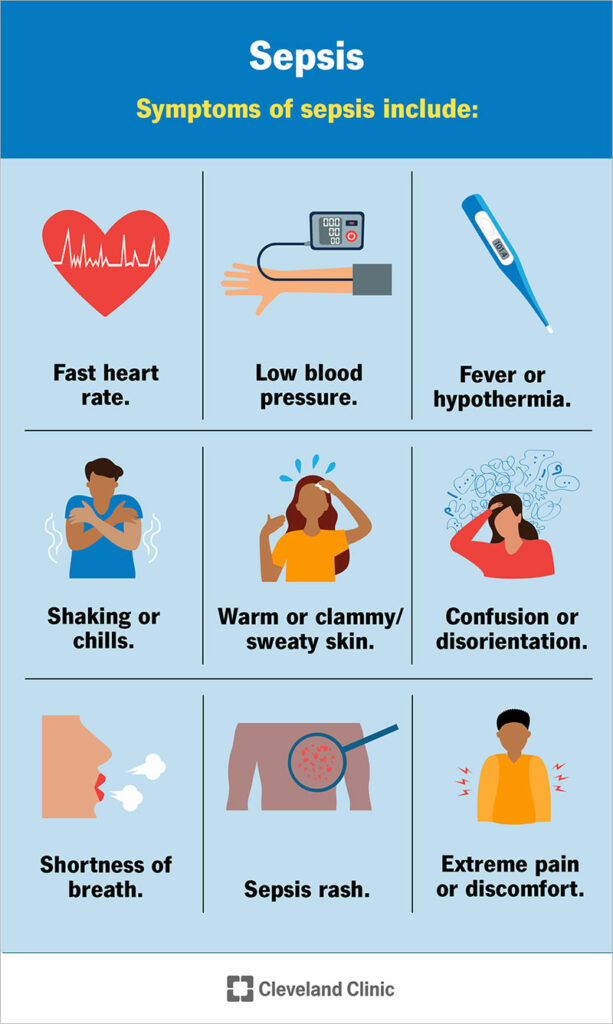The Mayo Clinic and the Cleveland Clinic define sepsis as a serious condition which happens when your immune system has a dangerous reaction to an infection. This causes extensive inflammation and the organs affected work poorly or fail.
Any type of infection can lead to sepsis including bacterial, fungal or viral infections. The most common places where sepsis occurs, include infections of:
- The lungs, such as pneumonia
- The kidney or bladder
- The digestive system
- The bloodstream
- At catheter sites
- In wounds or burns
What are the symptoms of sepsis?
- Urinary issues
- Low energy/weakness or sleepiness
- Fast heart rate
- Low blood pressure
- Fever or hypothermia
- Shaking or chills
- Warm or clammy/sweaty skin
- Confusion or agitation
Symptoms are usually specific to the type of infection, such as a worsening cough from pneumonia. They are also not person specific i.e., they can vary from person to person, and appear differently in children than in adults.

What are the symptoms of septic shock?
Sepsis can lead to septic shock, a dramatic drop in blood pressure that can damage the lungs, kidneys, liver, and other organs.
Symptoms can include:
- Lightheadedness
- Little or no urine
- Heart palpitations
- Skin rash
- Major changes in mental status, such as extreme confusion, lethargy or agitation
Most people recover from mild sepsis, but the mortality rate for septic shock is about 30% to 40%. An episode of severe sepsis or septic shock can raise the risk in future infections.
What are some of the risk factors?
- People over age 65
- Babies and young children
- People with lower immune response, such as those being treated for cancer or HIV
- People with chronic diseases such as diabetes, kidney disease or COPD
- Being in the intensive care unit or long hospital stays
- Intravenous catheters or breathing tubes
- Treatment with antibiotics in the last 3 months or treatments that require the use of steroids that can lower immune response

Diagnosis and treatment
Doctors often order several tests to try to pinpoint the underlying infection including blood tests, a urinalysis, wound liquid analysis or an analysis of saliva or mucus, depending on what seems to be causing the infection. If the infection is not readily discovered, doctors may also order x-rays, ultrasounds, CT scans or an MRI.
Quick and thorough treatment given early means a greater likelihood of recovery. People who have sepsis need close monitoring and treatment in an ICU because they may need lifesaving measures to stabilize their breathing and/or heart action.
Different medications are used in treating sepsis and septic shock. They include antibiotics, the use of intravenous fluids and the use of vasopressors which narrow blood vessels and increase blood pressure if pressure is too low.
Other medications may be used, such as insulin for blood sugar levels, or painkillers. Surgery may also be used to remove sources of infection such as infected tissue. Other patients may also need additional supportive care including getting oxygen to help breathing or dialysis for kidney problems.







